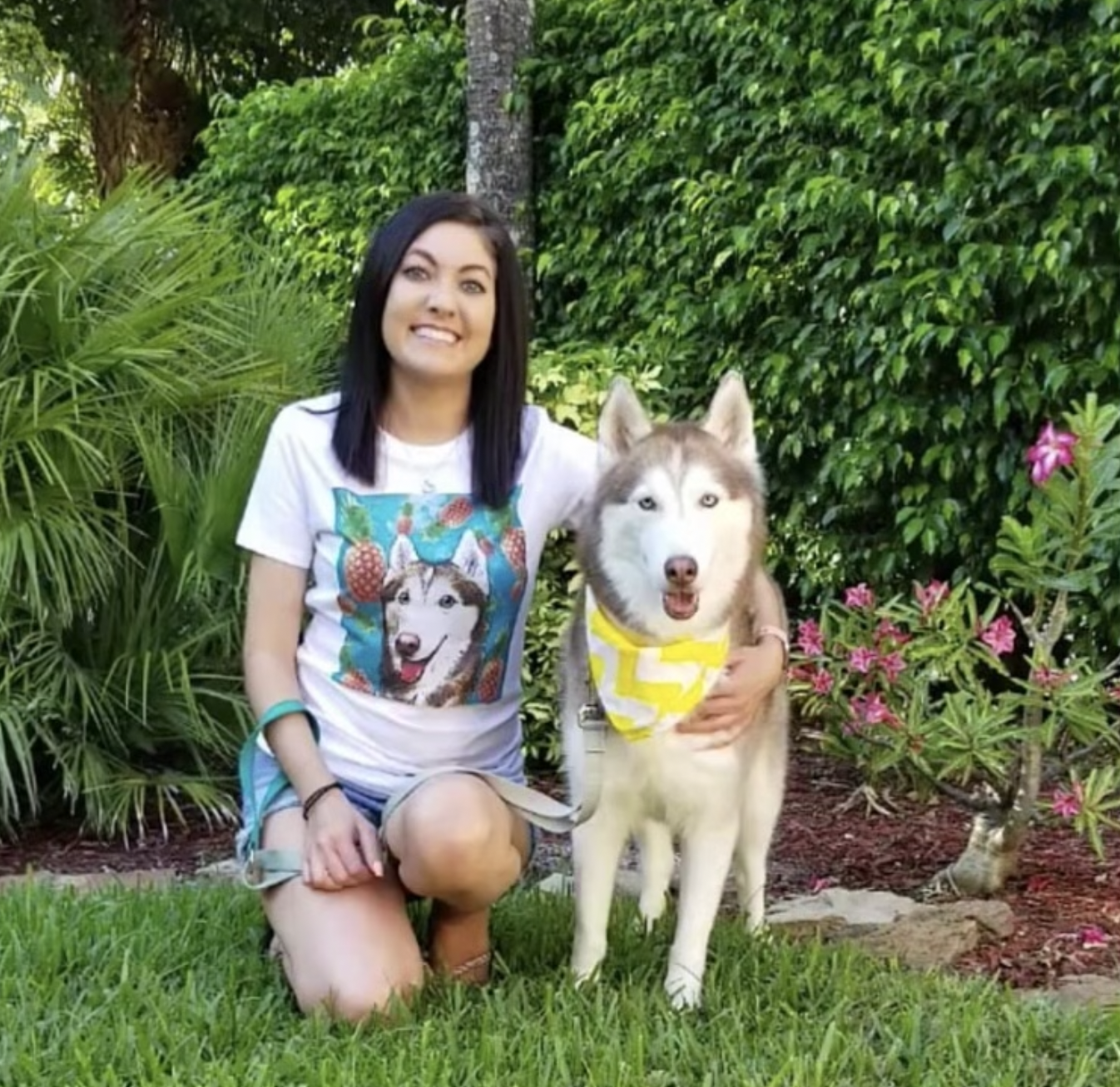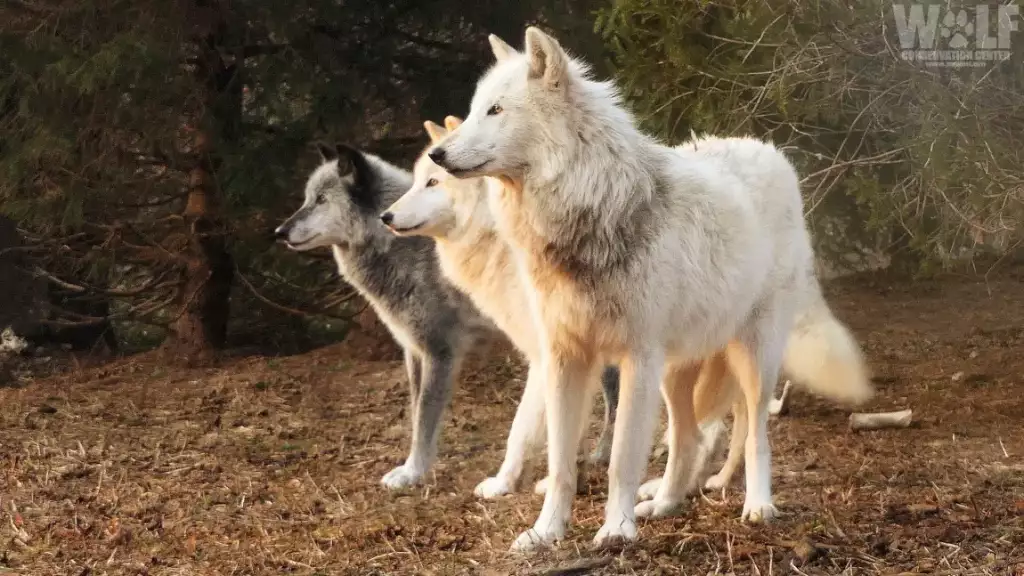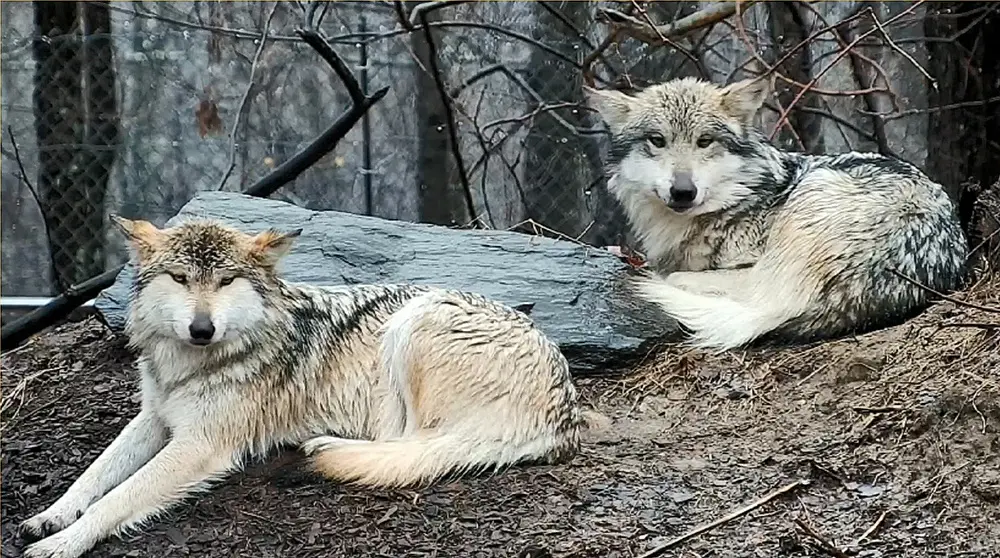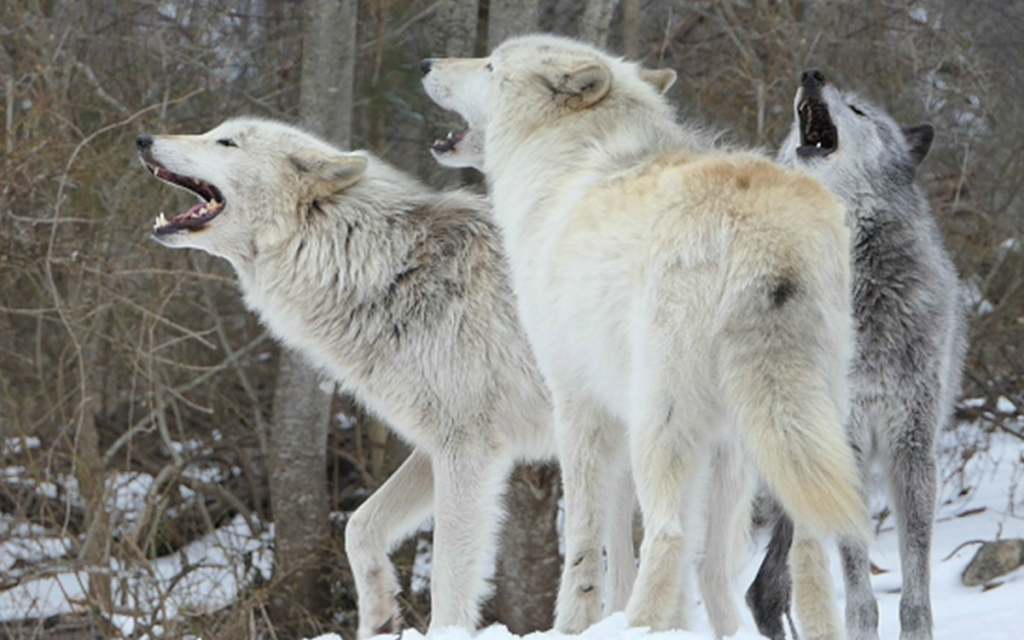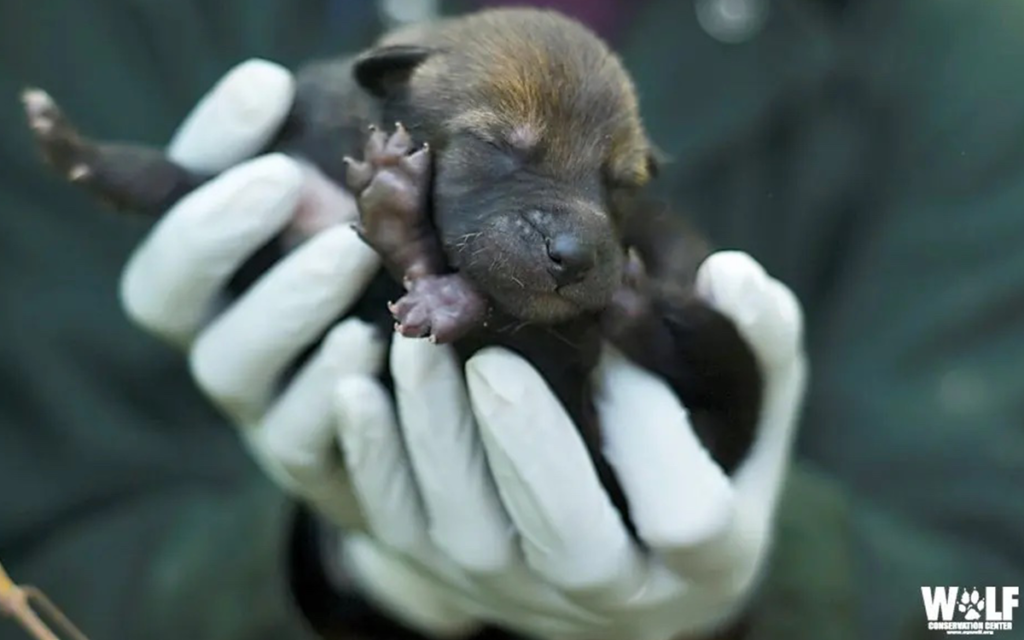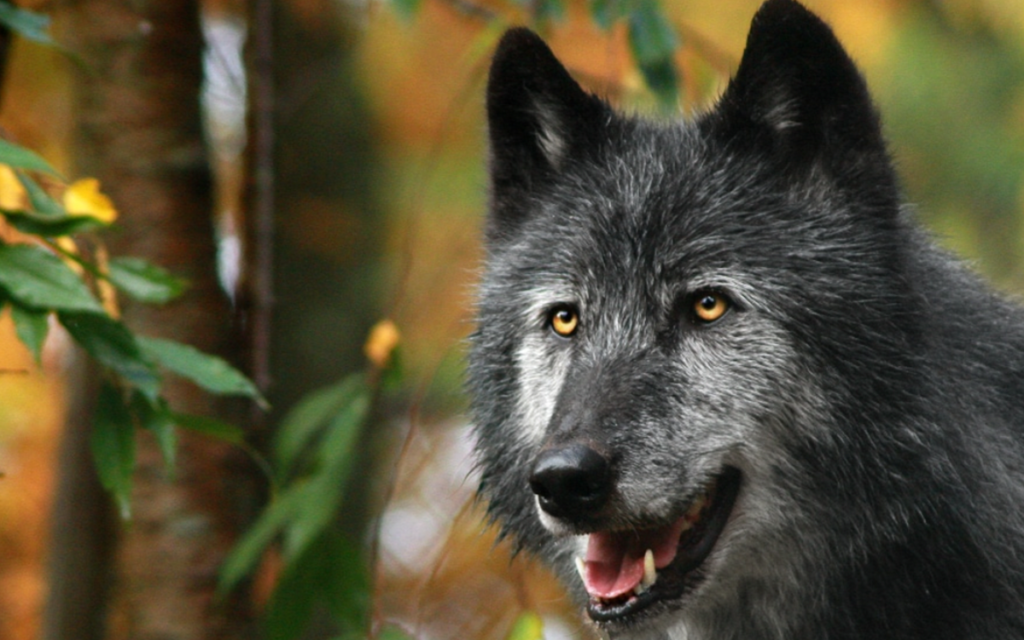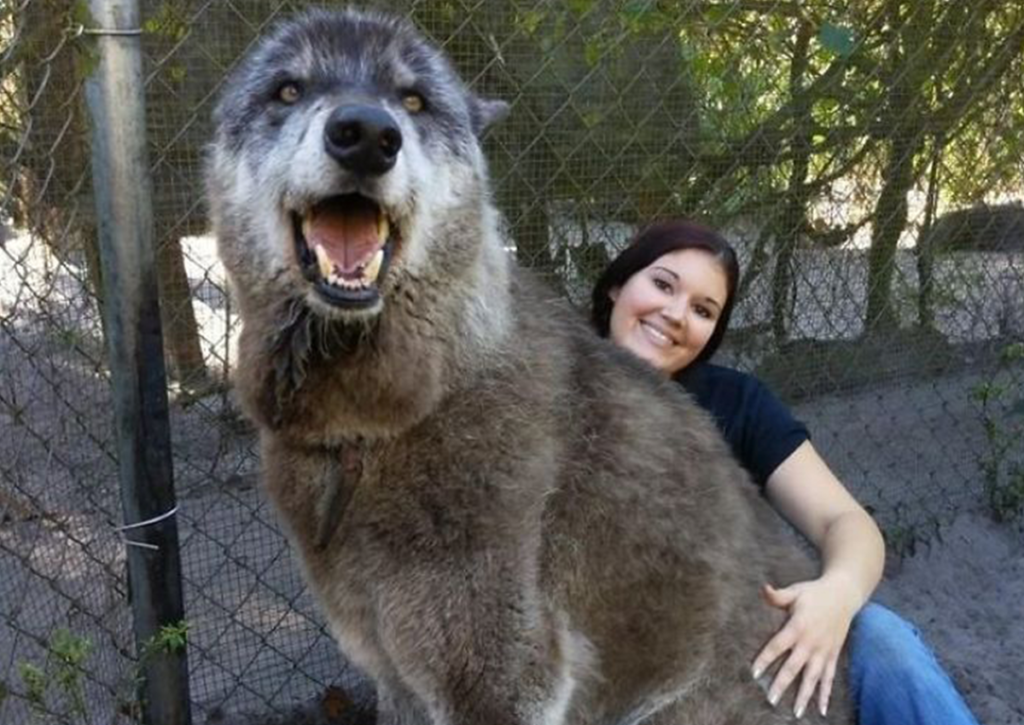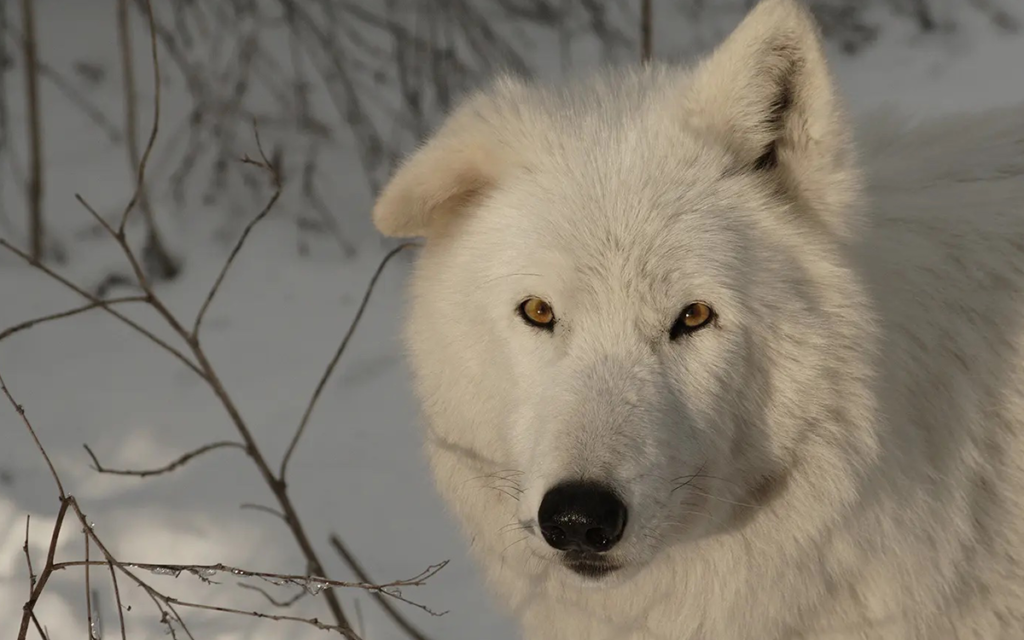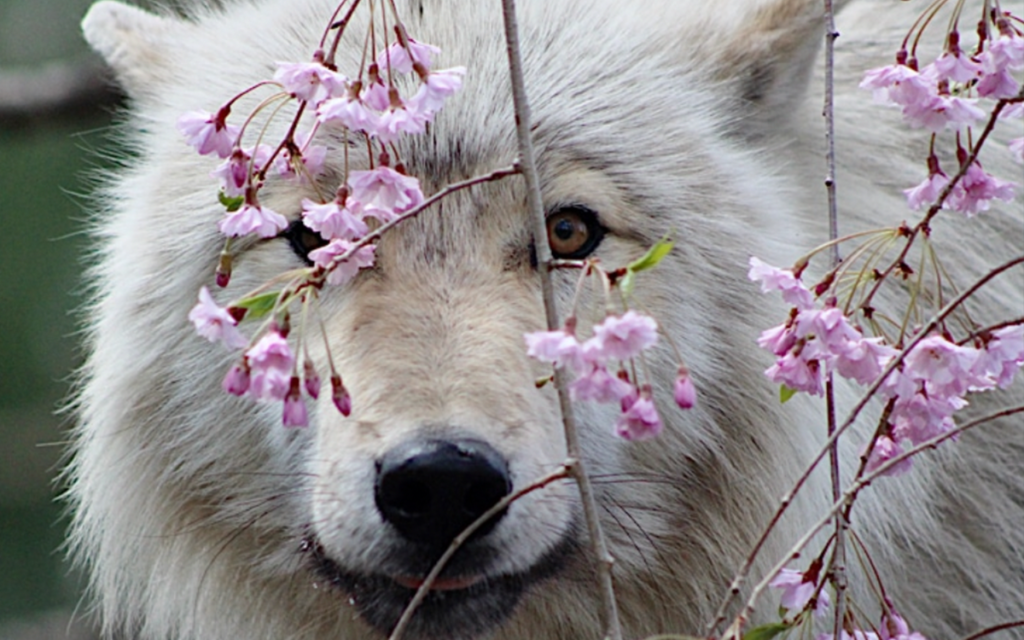Visiting a wolf conservation or sanctuary is a truly humbling and fascinating learning experience. The folks here at BARK Post had the pleasure of visiting the Wolf Conservation Center (WCC) in South Salem, NY to say hi to a few wolf pups, and learn some awesome stuff about wolves, dogs, and how they collide.
The WCC hosts packs of two endangered species of wolves, the Mexican gray wolf and the red wolf. Among them, they currently have three ambassador wolves, Nikai, Alawa, and Zephyr, who are comfortable interacting with people. These three help educate the public about their endangered wolf brethren.
Other wolves at the conservation center are involved in the Species Survival Plan recovery program to help preserve the species and carefully reintroduce them into the wild.1
1. Dogs And Wolves Split Thousands Of Years Ago
The two species split from a common ancestor between 15,000-40,000 years ago.2
Although some dogs, like huskies and malamutes, may look like they’d be more closely related to wolves than other breeds of domestic dogs, they actually have more in common with their boxer and pug friends at the dog park than they do with gray wolves, genetically speaking—even though they may resemble wolves and once lived in the same geographic area. So really, dogs and wolves are further removed from each other than humans have historically presumed.
2. Wolves Howl For Countless Reasons
Some wolves howl by themselves to get the attention of their pack; other times the entire pack of wolves will howl to tell another pack how large their group is (usually to tell them to stay off of their turf!). Wolves may also just start howling because another wolf has begun—it’s contagious.3 A howl session can even be triggered by nearby ambulance or police sirens that start the whole pack singing the song of their people!
Wolves can hear each other howl from up to 10 miles away, and each wolf has their own unique howl.3
3. WCC Ambassador Wolves Have Puppy Playmates & Doggy Nannies
When WCC raises wolf pups without their mothers, they sometimes enlist puppy playmates for ambassador wolves in order to socialize them early. They also bring in adult dogs as parental figures to show the wolf pups how to properly interact with humans.4
The newest ambassador at WCC, Nikai, was guided and nannied by an adult German shepherd dog named Kai when he was younger. Nikai would go everywhere with Kai, including on errands in the Wolf Conservation Center minivan!4 As a pup, Nikai also had playdates with other dog puppies, like in this video of him playing with a border collie pup!
4. WCC Introduces Newborn Red Wolf Pups Into Wild Packs
The red wolf is a critically endangered species with only 9 known remaining wolves in North Carolina as of 2021.3 WCC is working to change that!
To ease red wolves back into autonomous packs, WCC and other wolf conservation centers are working to rebuild the wild red wolf population by carefully inserting newborn pups into litters in the wild. Introducing these pups at such a young age ensures there will be no question as to whether they belong to the pack.5
Trying to introduce wolves when they’re older is not an easy task, but when they’re babies they blend seamlessly into a new litter of wolf pups. Like wolf adoption! Check out the wolves who successfully have been introduced into the wild.
5. Wolves Are Crepuscular
This means that they’re most active at dusk and dawn, as opposed to being nocturnal and active during the night as many people assume.6 You can watch wolf pup Nikai digging, playing, and running in the early morning here.
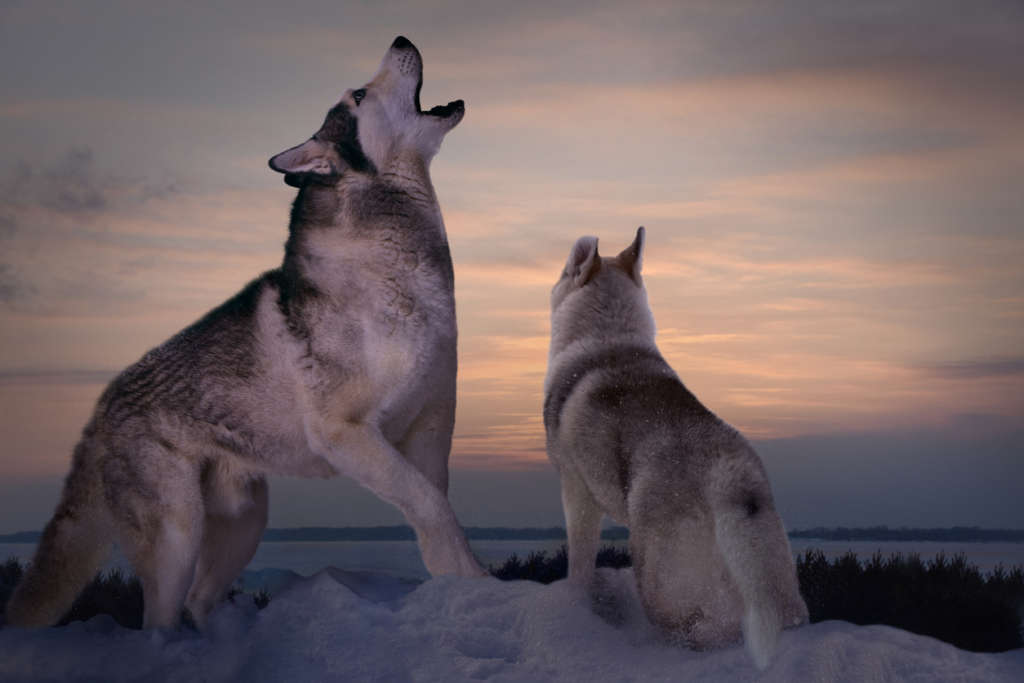

6. Wolves Can Get Hiccups
We already know that wolves howl, growl, whimper and whine, but did you know they can get a case of the hiccups too?7 The only difference is that when they get them, it’s adorable and goes viral, like this video of Nikai hiccuping when he was a pup.
7. Wolves Have Larger Skulls, Because They Have Bigger Brains
My, what big brains you have!
We all know how smart dogs are, but compared to wolves, an adult dog is about as intelligent as a wolf cub. And as backwards as it might sound, wolves’ intelligence is what makes them difficult to train. When wolves are comfortable with people, they might comply with your commands because they know what you’re asking (they’re wicked smart), but oftentimes they just don’t care enough to listen.
8. Wolves Are Bigger Than You May Think
People often get huskies or malamutes confused with wolves, but many of us don’t realize how large wolves can really be until you see them up close. A lot of that size comes from their tall legs, long body, and long coat.
The largest wolf recorded weighed 176.4lbs3, but most males weigh between 70–115lbs, and females weigh between 50–95lbs8, depending on the species or subspecies9 of wolf. Comparatively, male huskies weigh 45–60lbs and females weigh 35–50lbs.
9. Wolves Usually Leave Their Pack Around 2–3 Years Old
For the ambassador wolves at the WCC, this was tricky, because after a few years of living with the older ambassador pack of Apache, Kaila, and Lukas (who have all since passed), Atka (who has also now passed since this article was first written) began to challenge Apache for leadership of the pack. They moved Atka to a new enclosure, and all was well with the wolves.
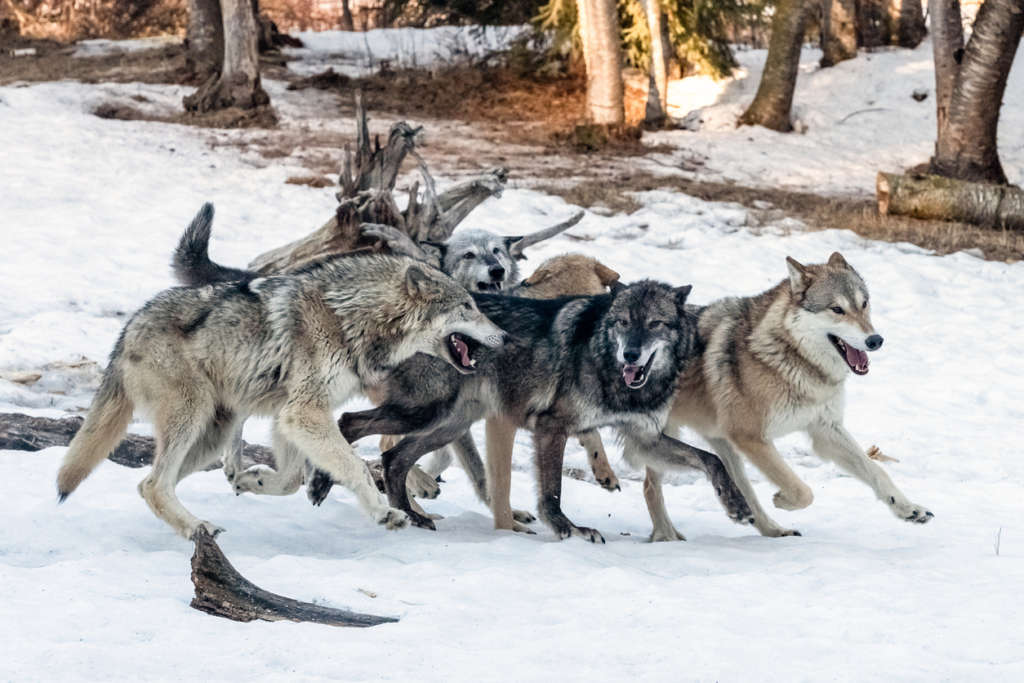

10. Both Wolves & Dogs Have 42 Teeth, But…
Wolves have longer canines, which means they can make quicker work of their prey.3 But that doesn’t mean they can’t be incredibly gentle if they choose to! Check out how carefully Atka would eat one of the most delicate foods in the world, an egg!
11. Though Wolves & Wolf Hybrids May Look Like Dogs, They Aren’t Pets
Wolves and wolf dogs (a mix between a wolf and a domestic dog) are wild animals, and they are unpredictable by nature10. Even the experts at the WCC have to be resigned to the fact that no matter how much they socialize a wolf cub for the ambassador pack, they cannot predict which cubs will grow into adult wolves who are comfortable and compliant around people.
Wolves like Atka, who was comfortable in public, are not the norm, and bringing a wolf or wolf hybrid into your home is not only ill-advised, but also very dangerous. Read more about wolf hybrids here.
12. The “Alpha” Of The Pack Is Not What You Think
What earlier researchers had believed to be the “alpha” of wild wolf packs was actually later discovered to be the parent wolves of the pack, usually consisting of a male and female breeding pair. Scientists now prefer to call this pair the “pack parents” or “breeding pair,” now that the theory behind alpha males has been disproven.3
So, if you have any friends who still like to refer to themselves as “alphas,” it may be time to break the news.
13. Both Dogs AND Wolves Love Their BarkBoxes! (Although For Wolves They’re Called HowlBoxes.)
If you really need a smile today and want to watch a wolf play with a squeaky toy, you need to watch this video right now!
A HUGE thank you to the Wolf Conservation Center for letting us visit and pick their brains! They are incredible advocates for these amazing animals.
Sources
1“Wolves in the Species Survival Plan (SSP) Program.” Wolf Conservation Center, 27 Dec. 2021, https://nywolf.org/meet-our-wolves/wolves-in-the-species-survival-plan-ssp-program/.
2Handwerk, Brian. “How Accurate Is the Theory of Dog Domestication in ‘Alpha’?” Smithsonian.com, Smithsonian Institution, 15 Aug. 2018, https://www.smithsonianmag.com/science-nature/how-wolves-really-became-dogs-180970014/.
3“Wolf FAQ.” Wolf Conservation Center, 16 July 2021, https://nywolf.org/learn/wolf-faq/.
4“Kai the Wolf Pup Nanny Turns 10 Years Old.” Wolf Conservation Center, 8 Feb. 2019, https://nywolf.org/2016/03/kai-the-wolf-pup-nanny-turns-10-years-old/.
5“Wolves in the Species Survival Plan (SSP) Program.” Wolf Conservation Center, 27 Dec. 2021, https://nywolf.org/meet-our-wolves/wolves-in-the-species-survival-plan-ssp-program/.
6“Why Do Wolves’ Eyes Glow in the Dark?” Wolf Conservation Center, https://nywolf.org/2020/05/why-do-wolves-eyes-glow-in-the-dark-4/.
7“Wolf Pup Hiccups!” Wolf Conservation Center, 10 June 2014, https://nywolf.org/2014/06/wolf-pup-hiccups/.
8Bradford, Alina. “Wolf Facts: Gray Wolves, Timber Wolves & Red Wolves.” LiveScience, 10 July 2017, https://www.livescience.com/27909-wolves.html.
9Main, Douglas. “These Two Rare Wolves Are Unique Species. Here’s Why That Matters.” National Geographic – Animals, National Geographic, 3 May 2021, https://www.nationalgeographic.com/animals/article/mexican-gray-wolf-and-red-wolves-are-unique.
10“Get Facts about Wolf-Dog Hybrids: International Wolf Center.” International Wolf Center | Teaching the World about Wolves., 7 Apr. 2021, https://wolf.org/wolf-info/basic-wolf-info/wolves-and-humans/wolf-dog-hybrids/.

